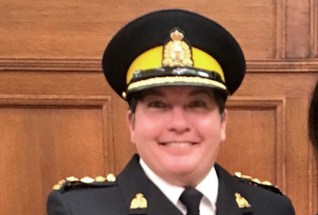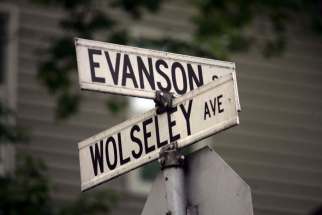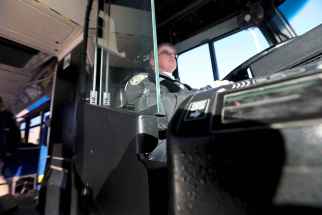Shields only part of Transit safety equation
Read this article for free:
or
Already have an account? Log in here »
To continue reading, please subscribe:
Monthly Digital Subscription
$0 for the first 4 weeks*
- Enjoy unlimited reading on winnipegfreepress.com
- Read the E-Edition, our digital replica newspaper
- Access News Break, our award-winning app
- Play interactive puzzles
*No charge for 4 weeks then price increases to the regular rate of $19.00 plus GST every four weeks. Offer available to new and qualified returning subscribers only. Cancel any time.
Monthly Digital Subscription
$4.75/week*
- Enjoy unlimited reading on winnipegfreepress.com
- Read the E-Edition, our digital replica newspaper
- Access News Break, our award-winning app
- Play interactive puzzles
*Billed as $19 plus GST every four weeks. Cancel any time.
To continue reading, please subscribe:
Add Free Press access to your Brandon Sun subscription for only an additional
$1 for the first 4 weeks*
*Your next subscription payment will increase by $1.00 and you will be charged $16.99 plus GST for four weeks. After four weeks, your payment will increase to $23.99 plus GST every four weeks.
Read unlimited articles for free today:
or
Already have an account? Log in here »
Hey there, time traveller!
This article was published 29/01/2019 (2506 days ago), so information in it may no longer be current.
It’s an example of city leaders placing safety first: Winnipeg Transit drivers may soon be protected by shields, as a measure against harassment and assaults. It’s a step in the right direction.
City council’s executive policy committee (EPC) last week approved a proposal that would use $3.1 million from the city’s 2019 capital budget to install the driver shields within a year.
An earlier proposal from the public works committee outlined using some of Transit’s 2018 surplus to have shields installed over an 18-month period. The committee had heard from Transit director Greg Ewankiw, who suggested given the time to do installations, the work could take up to three years.

EPC’s unanimous vote to support the one-year timetable must now move to city council for approval. While its passage seems likely, the full council vote on shield installation is not expected at this week’s meeting. Mayor Brian Bowman said it would be premature to allow council to vote on the possibility of using Transit’s 2018 surplus to fund the shields, because the final amount of the surplus won’t be known until some time after the meeting.
It’s good to see action taken toward improving safety for bus drivers on the job, a concern brought sharply into focus with the death of Irvine Jubal Fraser in 2017. Fraser’s death at the hands of a passenger on a bus he was driving highlighted the need for better security.
As part of the case against the person accused in the resulting trial, video relating to the incident was submitted in court. Video surveillance cameras were installed in Transit buses beginning in 1996, with Transit equipping all new buses with audio/video surveillance beginning in 2008.
No static measure of security is enough to guarantee a person’s safety in a job where they must interact, and sometimes enforce rules, with people on a daily basis. The cameras are meant as a security measure, but the evidence they captured in Fraser’s case is cold comfort to his loved ones.
The shields to be installed will protect the drivers while they are driving, but not when they leave the driver’s seat to deal with a passenger, as Fraser did. Nor will shields and cameras protect other passengers from an altercation. As emergency workers at hospitals have seen, a spike in meth use has increased the potential for violent altercations. The same risk could be posed to Transit drivers and passengers.
Having Transit supervisors on board who are trained in verbal de-escalation techniques could work in many situations. But in an unpredictable altercation, the shift from verbal negotiation to potentially needing to physically restrain a person can be rapid. That’s a whole other level of training — and authority.
What, then, would be an active measure of security aboard buses?
The question of whether a police presence on buses is feasible is worth considering, and having more officers using Transit while on duty could provide a measure of security. But it may not be enough.
City council should continue to look at improving security for bus drivers and commuters. Taking action on the shields is a good step. However, the problem is larger than protecting a driver while driving. The safety of all on board the bus requires a more comprehensive solution.












